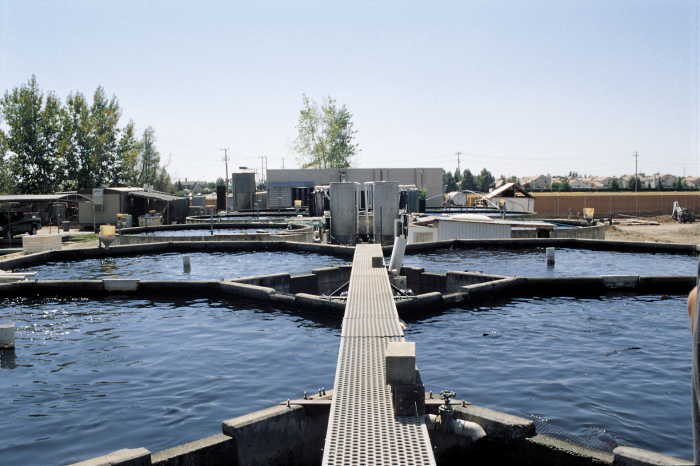



1996 年 8 月、Stolt Sea Farm ( www.stoltseafarm.com ) は、カリフォルニア州エルク グローブの再循環施設に Campbell Scientific の監視および制御システムを導入しました。このシステムは、溶存酸素レベル、水温、および全溶存ガスを監視し、それらの測定値に基づいて、酸素制御用のソレノイド値を自動的に制御します。Campbell システムには、CR10X、AM416 マルチプレクサ、および 3 つの SDM-CD16AC リレー デバイスが含まれています。このシステムは、キャビアを生産するチョウザメの養殖に使用するタンクの水質を常に監視します。このシステムは、12 個のタンクのそれぞれから水質データをベース ステーションの PC に常に送信します。
Stolt Sea Farm の Carl Beckham 氏は、各センサーに長いケーブルを追加することなく、12 個のタンクのそれぞれから酸素をモニタリングする非常に効果的な方法を考案しました。各溶存酸素 (DO) プローブを個別のタンクに取り付ける代わりに、タンクの水が PVC パイプを通ってモニタリング ステーションに連続的に流れるシステムを作成しました。次に、各 OxyGuard DO プローブをこれらのフロースルー パイプに取り付けられたスタンドパイプに取り付けます。このシステムでは、追加の Royce DO プローブも使用します。CR10X は、各タンクからの DO 読み取り値をこの 13 番目のプローブから受信した DO 測定値と体系的に比較するようにプログラムされています。測定値の差が大きくなりすぎた場合は、プローブを再調整する必要があります。
CR10X から監視されるデータは、農場のオフィス コンピュータに表示されます。CR10X は、RAD 短距離モデムを介して農場のオフィスの PC と通信します。さらに、PCAnywhere ソフトウェアを使用すると、従業員の自宅から Campbell Scientific システムを監視および制御できます。最後に、監視ステーション自体の LED ディスプレイにより、タンク内の作業員が現在の状態を確認することもできます。
1999 年初頭、ストルト シー ファームはカリフォルニア州ウィルトンの施設にキャンベル サイエンティフィック システムを導入しました。ウィルトン システムのセンサーは、26 個のタンクのそれぞれから出る排水スタンドパイプに設置されています。CR10X はウィルトンのストルト シー ファーム オフィス内に設置されているため、PC と CR10X は直接配線で接続されます。エルク グローブの施設と同様に、CR10X は DO レベルを監視し、状況に応じてタンクへの酸素放出を制御します。
Campbell システムを導入する前、ストルト シー ファームはウィルトン サイトで OxyGuard システムを使用していました。新しいCampbell Scientificの機器は、既存の OxyGuard DO プローブをそのまま使用しながら、監視および制御システムを完全に置き換えました。
ケーススタディの概要
アプリケーション
循環型養殖施設の監視と制御場所
米国北カリフォルニア使用製品
CR10X SDM-CD16AC AM416 PONDVIEW参加団体
Stolt Sea Farm計測項目
溶存酸素、水温、総溶存ガス制御対象デバイス
ソレノイドによる溶存酸素含有量関連ウェブサイト
Stolt Sea FarmPDFで見る